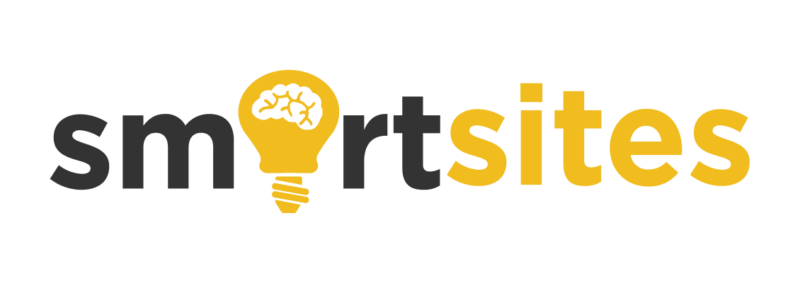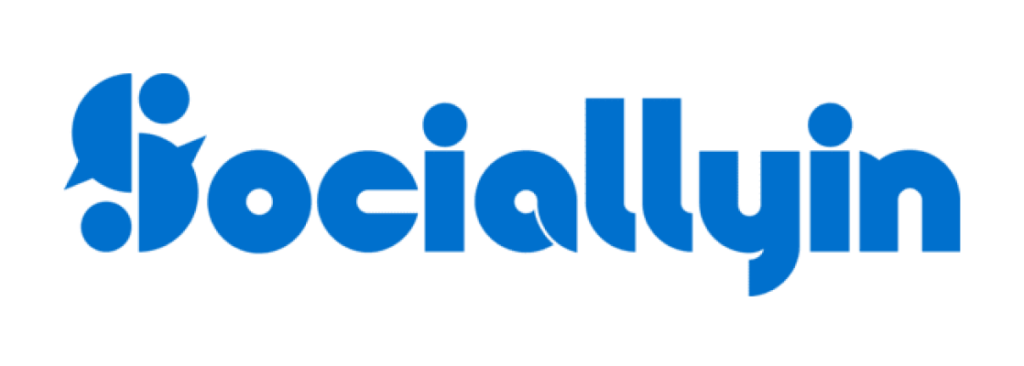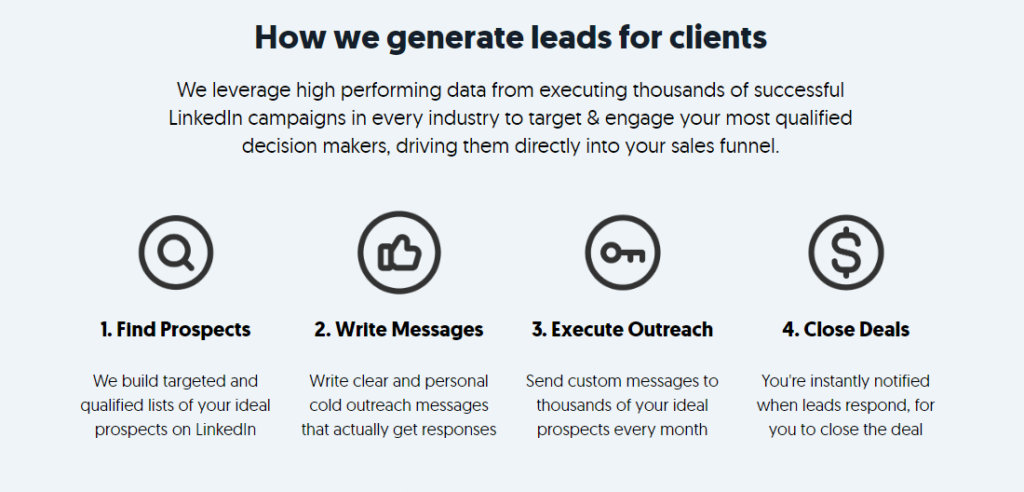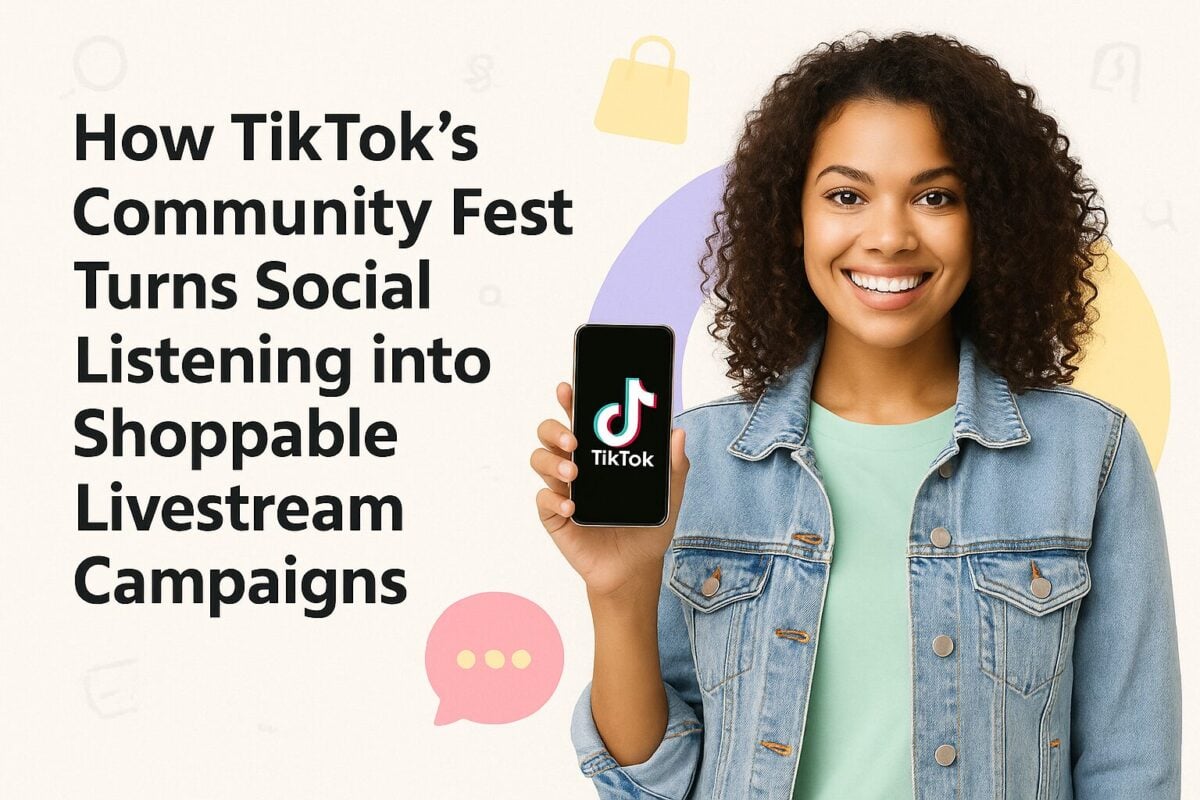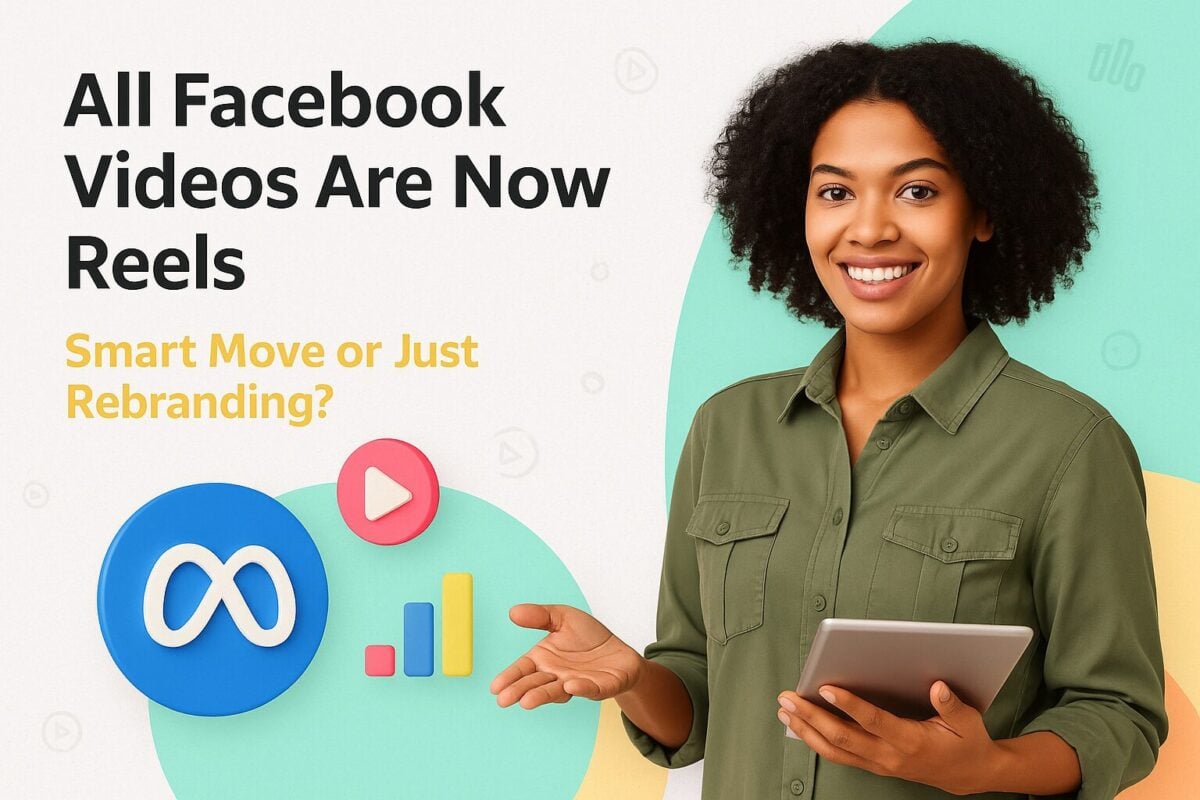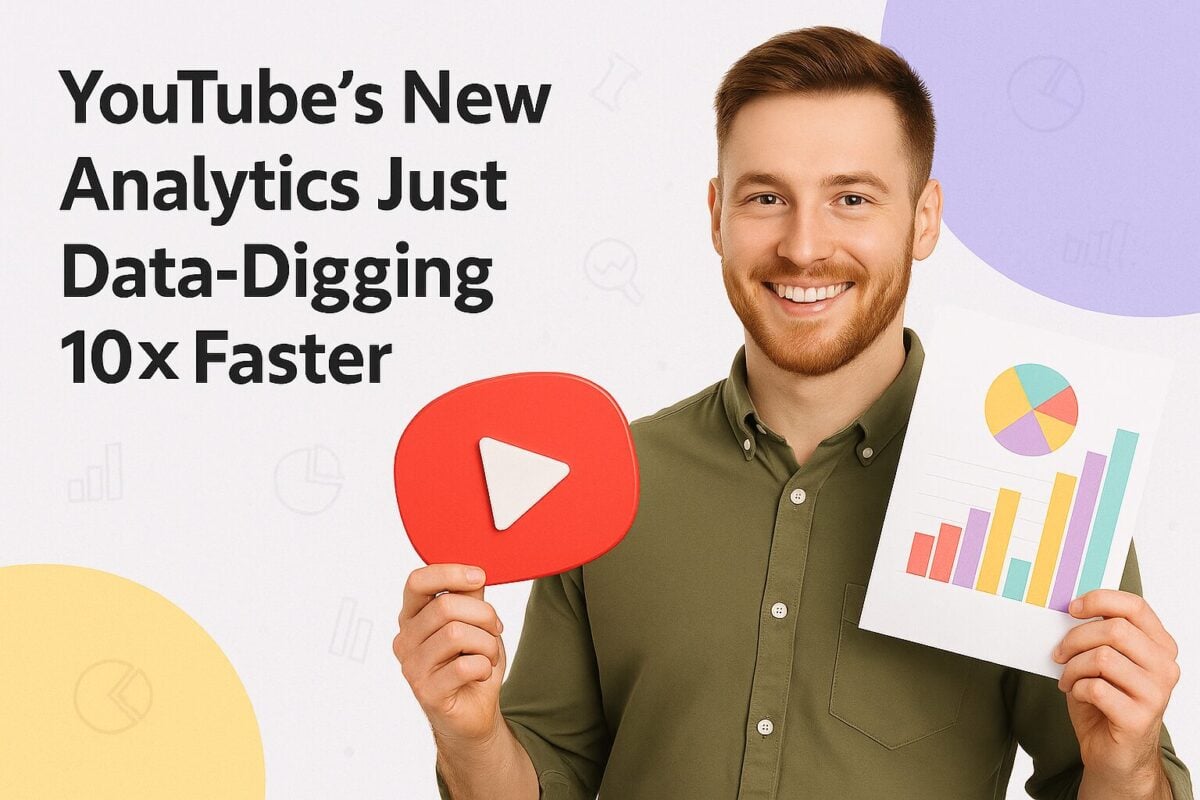Influencer Marketing Hub sets itself apart from conventional review platforms through the involvement of eCommerce experts such as Werner Geyser, Djanan Kasumovic, Camille Kennedy, Dave Eagle, and other notable industry figures. This expert team brings a profound understanding of the eCommerce landscape, assessing tools and platforms with an insider’s perspective on capabilities, experience, and industry acumen. Unlike user-generated review platforms, Influencer Marketing Hub’s evaluations are rooted in extensive firsthand experience and direct interactions with the tools and platforms in question. This ensures that the reviews are not only trustworthy but also deeply informed. High-caliber brands like SmartSites, Sociallyin, and Cleverly undergo rigorous monthly evaluations, highlighting the platform’s commitment to identifying and showcasing top-tier solutions in eCommerce and beyond.
Influencer Marketing Hub has consistently been recognized by leading media outlets for our authoritative data, findings, and insights within the eCommerce landscape. Our platform is frequently cited as a trusted source of information, demonstrating the value and impact of our work in shaping industry standards and practices.
Influencer Marketing Hub employs an expert-driven methodology to evaluate eCommerce agencies, ensuring that our recommendations are both reliable and comprehensive. This approach is designed to help businesses and individuals find the best agencies to meet their specific eCommerce needs. Here’s how we assess the various agencies like SmartSites, Sociallyin, and Cleverly:
Navigating the intricate world of social selling requires more than just a digital presence; it demands a strategic partner who understands the nuances of online consumer behavior. This expert listicle presents the crème de la crème of social selling agencies, each offering unique approaches to harness the power of social networks for business growth. From innovative engagement techniques to cutting-edge analytics, these agencies provide the tools and expertise necessary for brands to thrive in the competitive digital marketplace.
Top Social Selling Agencies
1. SmartSites

Pricing: $1.000+
Agency size: 50+
Location: Paramus, New Jersey
Channels: Amazon, Facebook, Google, Google Ads, Instagram, LinkedIn, Pinterest, Reddit, Snapchat, TikTok, Twitter, YouTube Advertising
SmartSites, a versatile social selling agency, excels in creating robust social media presences for businesses. Their services encompass optimized profiles across platforms, monthly content calendars, and active engagement strategies. Tailoring each strategy to your brand, SmartSites works closely to capture the right tone and visuals. They emphasize strengthening brand identity through personalized content, ensuring maximum exposure. Their approach to social selling involves active engagement on channels to increase organic reach, making them an ideal partner for businesses seeking comprehensive social media management.
2. Sociallyin

Pricing: $5.000+
Agency size: 50+
Location: Atlanta, Georgia
Channels: Facebook, LinkedIn, YouTube
SociallyIn stands out as a social selling agency specializing in tailored strategies for leveraging social media in sales processes. You’ll find their approach comprehensive, offering services like social media profile management. They focus on targeting and engaging decision-makers, funneling them directly into sales pipelines. With SociallyIn, expect a consultative approach, understanding your specific goals to tailor social media marketing strategies effectively.
3. Cleverly

Pricing: $1.000+
Agency size: 10 – 50
Location: Los Angeles, California
Channels: LinkedIn, Blog, Google Ads
Cleverly positions itself as a dedicated LinkedIn social selling agency, focusing on relationship-based strategies to enhance B2B sales. Their approach involves optimizing LinkedIn profiles, posting valuable content, and engaging directly with potential leads. Cleverly advocates for building trust and reputation as industry experts before pitching, differentiating them in the social selling landscape. Their long-term focus on nurturing relationships to generate leads and sales makes them a go-to agency for B2B companies aiming to leverage LinkedIn effectively.
4. Brighter Click

Pricing: $1.000+
Agency size: 2 – 9
Location: Cary, North Carolina
Channels: Facebook, TikTok
Brighter Click is a standout social selling agency. They specialize in creating marketing strategies that resonate with the unique voice of customers. Their services, including ad creative and UGC & influencer content sourcing, are tailored to drive profitable growth. Brighter Click’s innovative approach, transparent reporting, and personalized strategies make them a top choice for businesses seeking to amplify their brand and boost their bottom line through social selling.
5. SLT Consulting

Pricing: $5.000+
Agency size: 10 – 49
Location: New York, New York
Channels: Instagram, Facebook, Pinterest
SLT Consulting, a female-led, strategy-driven growth collective, excels in digital marketing for consumer product brands. Their boutique agency experience positions them uniquely in the social selling arena. They offer comprehensive services like content marketing strategy, social media, and search engine marketing, focusing on integrating customer insights into business objectives. SLT Consulting’s approach to social selling is about creating irresistible appeal to the ideal customer, making them a prime choice for brands focusing on growth and identity.
6. Impactable

Pricing: $1.000+
Agency size: 10 – 49
Location: San Antonio, Texas
Channels: LinkedIn, YouTube
Impactable, a leading B2B LinkedIn marketing agency, is renowned for its specialized approach in managing LinkedIn paid ads and marketing for B2B startups. Their deep expertise in LinkedIn, combined with demand generation strategies, sets them apart as a social selling agency. They leverage extensive data and unique retargeting frameworks to maximize campaign results. Impactable’s focus on building trust and credibility through retargeting improves lead costs and ROI, making them an ideal partner for startups seeking effective LinkedIn advertising strategies.
7. yellowHEAD

Pricing: $5.000+
Agency size: 1 – 10
Location: New York, New York
Channels: Amazon, Blog, Facebook, Google, Google Ads, Instagram, LinkedIn, Pinterest, Reddit, Snapchat, TikTok, Twitter, YouTube, YouTube Advertising
YellowHead is a digital marketing agency offering a range of solutions, including influencer marketing and UGC ads, making them a versatile social selling agency. Their focus on transforming performance marketing with creative analytics technology distinguishes them in the social selling space. YellowHead combines marketing expertise, advanced technologies, and creativity to help brands grow, integrating paid and organic strategies for maximum impact. Their services, including precise targeting and data-driven campaigns, are ideal for brands seeking comprehensive digital marketing strategies with a focus on user acquisition and creative content.
8. Socialistics

Pricing: $5.000+
Agency size: 2 – 9
Location: Seattle, Washington
Channels: Instagram, Facebook, TikTok, YouTube
Socialistics, a social media marketing agency, excels in delivering real, measurable results through social media marketing, positioning them as a proficient social selling agency. They offer both organic and paid social media services, focusing on storytelling and community building. Their approach to paid social involves audience targeting, A/B testing, and optimization. Socialistics’ ability to generate engagement and leads, as demonstrated in their work with the US Air Force’s Pacific Northwest branch, makes them a top choice for businesses seeking effective social media marketing strategies.
9. ICUC

Pricing: $10.000+
Agency size: 250 – 999
Location: Montréal, Canada
Channels: Facebook, Instagram, Twitter, LinkedIn, TikTok, Pinterest, YouTube, Reddit, Twitch
ICUC is a social media management agency providing comprehensive services for all stages of the customer journey. Their global team, operating in over 52 languages, focuses on brand-aligned interaction and rapid response, making them a unique social selling agency. ICUC’s approach includes social listening software tailored to business needs, allowing for effective tracking and analysis. They emphasize protecting brand reputation and leading market trends through customer insights, ideal for enterprises seeking comprehensive social media management, especially in community engagement and brand protection.
10. WideFoc.us

Pricing: $5.000+
Agency size: 10 – 49
Location: Denver, Colorado
Channels: Facebook, Instagram, YouTube
WideFoc.us, a Denver-based social media marketing agency, specializes in real-time social media strategies for B2B and B2C clients. Their services, including social media audits, content planning, and strategic guidance, are tailored to elevate and activate social media presences. WideFoc.us focuses on driving visibility and generating qualified website traffic, making them a go-to agency for businesses of any size and industry looking to maximize their online reach and impact through social media marketing.
Social Selling Impact on Sales Revenue
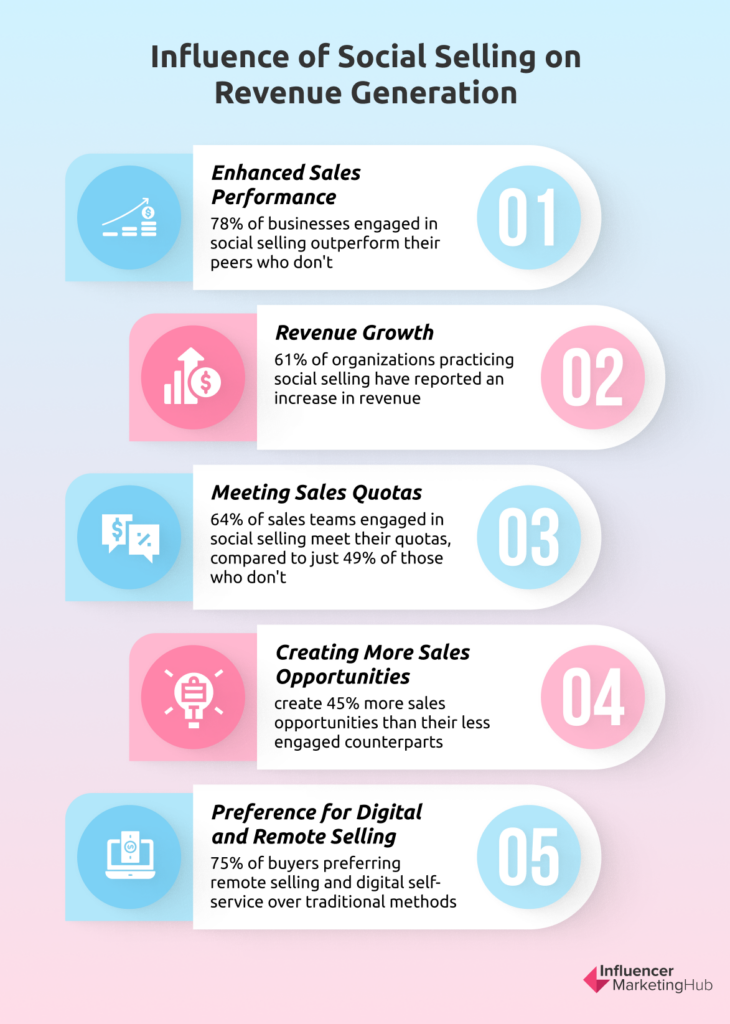
Social selling, the strategic use of social media networks to connect with potential customers, has revolutionized the sales landscape by allowing a more direct, personal, and interactive engagement. This approach, focusing on building relationships rather than direct selling, has shown a significant impact on sales revenue. Let's explore how social selling influences sales performance, revenue growth, and the achievement of sales quotas.
-
Enhanced Sales Performance
Social selling has emerged as a game-changer in boosting sales performance. A study reveals that 78% of businesses engaged in social selling outperform their peers who don't use such strategies. By leveraging social media, sales professionals can engage more effectively with their target audience, building trust and establishing themselves as thought leaders in their respective industries.
-
Revenue Growth
The link between social selling and revenue growth is more than anecdotal; it's substantiated by solid data. Approximately 61% of organizations practicing social selling have reported increased revenue. Social selling enables companies to forge stronger connections with their audience, leading to more effective customer acquisition and retention strategies, which are essential components of revenue growth.
-
Meeting Sales Quotas
Meeting sales quotas is a critical benchmark for success in sales, and here, social selling plays a transformative role. Around 64% of sales teams engaged in social selling meet their quotas, a significant increase compared to just 49% of those who don't use these methods.
-
Creating More Sales Opportunities
Leaders in social selling create 45% more sales opportunities than their less-engaged counterparts. This substantial increase in opportunities directly contributes to sales and revenue growth and showcases the pivotal role of social selling in expanding business prospects.
-
Preference for Digital and Remote Selling
In the B2B sector, there's a noticeable shift towards digital and remote selling, which aligns seamlessly with social selling strategies. With 75% of buyers expressing a preference for remote selling and digital self-service over traditional methods, the importance of social selling becomes paramount.
What do Social Selling Agencies Do?
Social selling agencies specialize in leveraging social media platforms to enhance sales and marketing efforts. These agencies play a crucial role in shaping a brand's online presence, fostering customer relationships, and ultimately driving sales through social media channels. Here's a breakdown of their key functions:
Strategy Development
Social selling agencies devise tailor-made strategies that align seamlessly with a brand's distinct objectives and ambitions. Their process involves a deep dive into identifying the most effective social media channels and engagement tactics specific to the brand’s target audience. They undertake a thorough analysis that encompasses industry trends, competitor strategies, and nuanced customer behavior insights. By doing so, they ensure every tactic is backed by data and aligned with the brand's core values and messaging. Some agencies, like Cleverly, focus exclusively on a single channel (LinkedIn) for all social selling activities. Here’s a breakdown of their strategy process:
Content Creation and Curation
Content is the linchpin of social selling, and these agencies excel in creating and curating a rich tapestry of content that resonates deeply with the target demographic. These agencies create diverse and dynamic content, from insightful blog posts and thought-provoking articles to engaging social media posts and visually arresting videos. In the cases of Brighter Click and YellowHead, their forte lies in User-Generated Content, expertly weaved to sell through social media influencers and prominent figures in the industry. Regardless, each content piece is intricately designed to capture and retain customer interest and reinforce the brand's identity and ethos, making every interaction meaningful and memorable.
Building and Nurturing Relationships
Central to the ethos of social selling agencies is their commitment to building and deepening relationships with potential and existing customers. Through consistent and genuine engagement in online conversations, timely responses to queries, and creating a vibrant community around the brand, they foster an environment of trust and loyalty. This approach helps transform casual browsers into committed brand advocates, ensuring a loyal customer base that grows organically.
Training and Empowering Sales Teams
Beyond direct marketing efforts, social selling agencies focus on empowering sales teams with specialized training and resources. One such agency, SociallyIn, offers comprehensive social selling workshops, equipping sales teams with the skills to effectively harness social media. They guide sales professionals through best practices for engaging with prospects and integrating social selling into broader sales strategies. This training is pivotal for enabling sales teams to confidently navigate the digital landscape, turning social interactions into successful sales conversions. SociallyIn's workshops include personalized elements like LinkedIn profile optimization and strategies for lead generation and nurturing, tailored to each organization's unique needs.
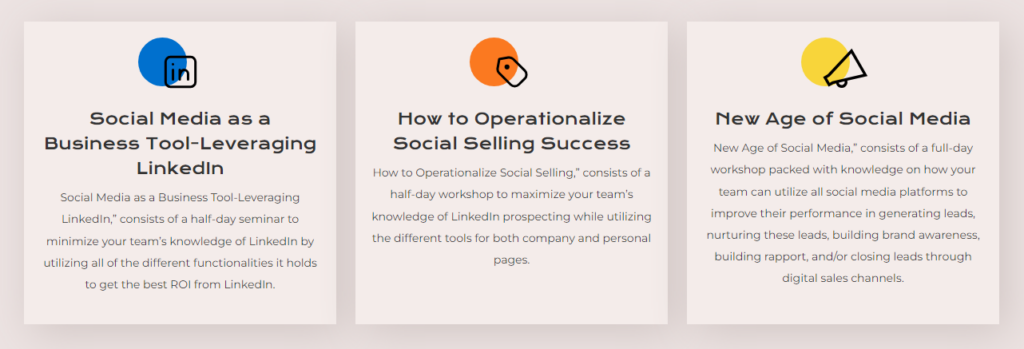
Analytics and Reporting
The role of these agencies extends to meticulous tracking and analysis of social selling initiatives. They utilize advanced metrics to refine strategies and improve outcomes, ensuring each campaign delivers maximum impact. Regular, detailed reporting on key metrics like engagement rates, lead generation, and conversion rates provides brands with a clear understanding of their social selling ROI, offering actionable insights for future strategy enhancements.
Staying Ahead of Trends
Social selling agencies are at the vanguard of the latest trends and breakthroughs in social media and digital marketing. They proactively adapt strategies to leverage new tools and platforms, ensuring their clients are always ahead in the rapidly evolving digital space. Their ability to anticipate and respond to market changes keeps brands relevant and competitive, allowing them to capitalize on emerging opportunities in the digital domain. Considering TikTok’s meteoric rise in popularity, agencies like SmartSites, YellowHead, Brighter Click, and Socialistics have been quick to master it and offer social selling services specifically for the platform.
Social selling agencies are pivotal in bridging the gap between social media and sales. They provide the expertise, tools, and strategies necessary for businesses to effectively engage with their audience, build lasting relationships, and drive sales in the digital age.
Methodology
In our pursuit to present the most comprehensive list of social selling agencies, we meticulously analyzed a multitude of factors. Our expert team, leveraging over six years of expertise in the social selling domain, evaluated over 14,000 agencies. The evaluation process involved a detailed assessment across several key parameters. These included the effectiveness of social selling strategies employed, client feedback and success stories, innovation in approach, and the ability to adapt to the ever-evolving digital landscape. We also scrutinized the agencies' proficiency in utilizing various social media platforms, their engagement tactics, and the overall return on investment they offer to clients. Our methodology was rooted in both quantitative data and qualitative insights, ensuring a balanced and thorough evaluation. Our comprehensive review process, enriched by our team's extensive experience in the social selling space and our extensive body of over 3,000 articles, ensures that our list reflects the most reliable, innovative, and effective social selling agencies in the industry.
Conclusion
In the realm of digital commerce, the right social selling agency is a beacon guiding brands towards success. These agencies, with their deep understanding of market trends and consumer psychology, help businesses avoid common pitfalls and fully leverage the benefits of social selling. By partnering with one of these expert agencies, your brand can effectively navigate the evolving landscape of online sales, ensuring a robust and engaging presence in the digital world. Embrace this expert guide to social selling and transform your approach to digital customer engagement.
Social selling involves leveraging social media platforms to connect with prospects, build relationships, and, ultimately, close sales. It differs from traditional selling by focusing on online interactions and content sharing to establish trust and credibility. Absolutely. Small businesses can greatly benefit from social selling as it offers a cost-effective way to reach a larger audience, build brand awareness, and engage with potential customers on platforms where they spend a significant amount of time. Success in social selling is typically measured through metrics such as engagement rates, lead generation numbers, conversion rates, and ultimately, the return on investment (ROI) from social media campaigns. Content is crucial in social selling as it helps establish your brand as a thought leader, engages your audience, and provides value, thereby building trust and relationships with potential customers. While social selling is versatile, its effectiveness can vary depending on the industry, target audience, and the nature of the products or services offered. It's most effective for businesses whose audiences are active on social media platforms.Frequently Asked Questions
What is Social Selling and How Does it Differ from Traditional Selling?
Can Small Businesses Benefit from Social Selling?
How Do Social Selling Agencies Measure Success?
What Role Does Content Play in Social Selling?
Is Social Selling Suitable for All Types of Businesses?
